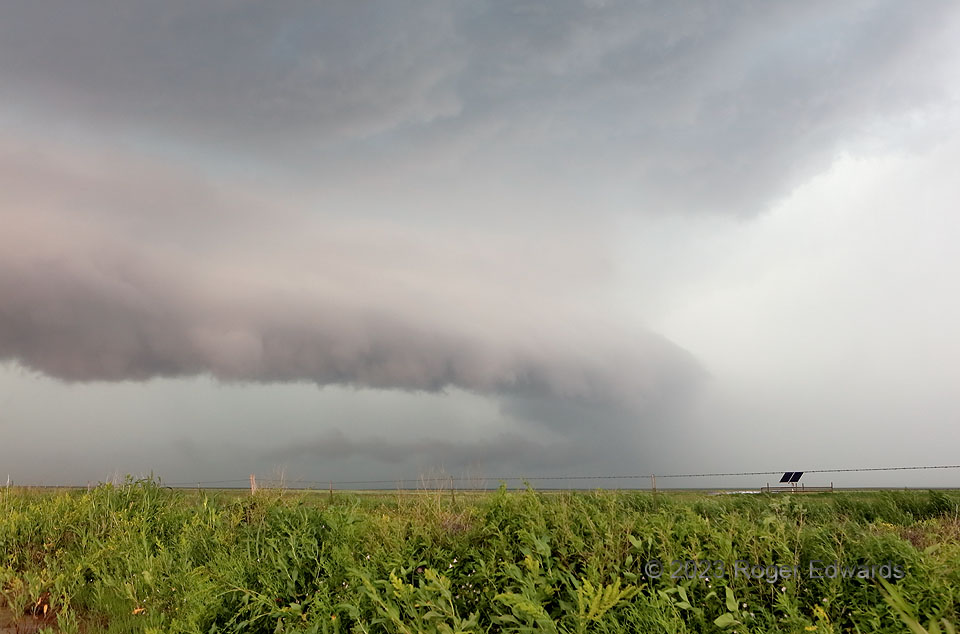Sometimes, tracking storms in the field is far more indirect than expected. Headed northwest from Dalhart, then west near the Oklahoma line for an intensifying supercell dropping SE from the Oklahoma Panhandle, we were moving toward ideal position to observe, but still in sun and barely too distant to see more than murky darkness under the anvil. Cresting the hill of the heretofore good dirt road, I saw at the bottom about a mile down…a quarter-mile-long strip of deeply rutted mud and water puddles sparkling in the sunshine, with a couple vehicles stuck (and receiving help from locals). It had been a wet spring in those parts, and such a quagmire was a definite no-go. To get back near the original target position, I had to drive back east, southeast, west, northwest, and north for about 40 road miles, missing a brief, fuzzy tornado by less than ten minutes. That was far from the first time something like that has happened, too! By the time the tortuous circuit was finished, the storm had moved about 15 miles and was accelerating, as its weakly tornadic youth evolved into outflow-surfing, heavy-precipitation maturity. We would stairstep southeastward across much of the Panhandle through the rest of the day to stay ahead of this storm and observe its successors. The last remains of the tornadic mesocyclone are visible here behind the right edge of its intervening, rear-flank gust front’s shelf cloud, with a lower-level tail cloud still feeding in. Despite the somewhat murky mess, this storm had an ethereal beauty to it that I appreciated, but just for a few minutes until the core got too close and sent us back equatorward.
10 NNE Perico TX (13 Jun 23) Looking NW
36.4147, -102.7971
